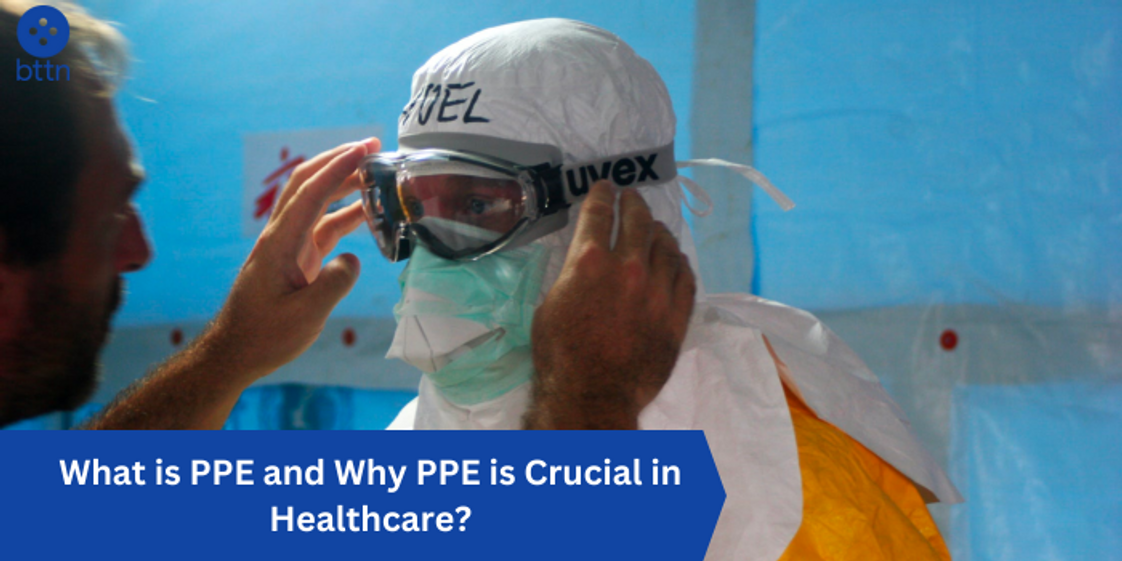
What is PPE and Why PPE is Crucial in Healthcare?
Posted by Pankaj Dhiman on Jan 8th 2024
What is PPE and its Importance in Healthcare?
In the world of healthcare, the well-being of both patients and medical professionals is paramount. This requires not only advanced medical practices and treatments but also robust protocols for infection prevention and control. One of the most critical elements in this defense system is personal protective equipment (PPE).
What is PPE?
PPE refers to gear worn by healthcare personnel to protect themselves from exposure to hazards, primarily biological agents like viruses and bacteria. This equipment acts as a physical barrier, reducing the risk of contact with infectious materials like blood, bodily fluids, and respiratory secretions.
Must Read: Buy Protective Face Shield Online - bttn
Common types of PPE in healthcare include:
- Gloves: Made from materials like latex, nitrile, or vinyl, gloves shield hands from contamination.
- Gowns and aprons: Waterproof and fluid-resistant, these garments protect clothing and skin from splashes and sprays.
- Masks: Surgical masks and respirators filter airborne particles, with respirators offering higher levels of protection.
- Eye protection: Goggles and face shields safeguard the eyes from splashes and droplets.
- Shoe covers: Prevent the spread of contaminants on footwear.
Buy Now - PPE, Gloves, Face Masks, Infection Control Products
Why is PPE Important in Healthcare?
The importance of PPE in healthcare cannot be overstated. It plays a crucial role in:
- Protecting healthcare workers: PPE minimizes the risk of healthcare workers contracting infectious diseases while providing care, safeguarding their health and well-being.
- Preventing the spread of infections: By creating a barrier between healthcare workers and patients, PPE helps prevent the transmission of pathogens from one person to another, reducing the risk of healthcare-associated infections (HAIs).
- Ensuring patient safety: For vulnerable patients with weakened immune systems or undergoing invasive procedures, exposure to even seemingly minor infections can have serious consequences. PPE helps create a safe environment for these patients, promoting their recovery and preventing complications.
- Maintaining public health: By protecting healthcare workers and patients from infections, PPE plays a vital role in safeguarding public health and preventing the spread of contagious diseases within the community.
Must Read: Shop At Home Medical Test Kits: Top 10 Products
Beyond the Basics: Using PPE Effectively
While having the right PPE is essential, its effectiveness hinges on proper use and handling. Here are some key aspects of effective PPE use:
- Selection: Choosing the appropriate PPE for the specific task and potential risk of exposure is crucial. Following established guidelines and protocols is essential.
- Donning and doffing: Proper procedures for putting on and removing PPE are vital to prevent contamination. Training and regular practice are crucial.
- Maintenance and disposal: Keeping PPE clean and in good condition, and disposing of it safely after use, are essential for maintaining hygiene and preventing cross-contamination.
- Education and training: Healthcare workers must be adequately trained on the proper selection, use, and care of PPE. Regular education and awareness programs are crucial.
Must Read: How to Choose the Right Medical Supplies for Your Needs
The Challenges of PPE
Despite its critical role, access to and proper use of PPE can be challenging, especially during outbreaks or pandemics. Shortages of supplies, inadequate training, and improper adherence to protocols can compromise the effectiveness of PPE. Addressing these challenges through increased production, targeted training programs, and stricter adherence to guidelines is essential.
Must Read: Wholesale Surgical Gowns: Buy the Most Popular Items Now
Conclusion
PPE is a cornerstone of infection prevention and control in healthcare. By understanding its importance, using it effectively, and addressing the challenges associated with it, we can create a safer environment for both healthcare workers and patients, ultimately contributing to a healthier public.





























































